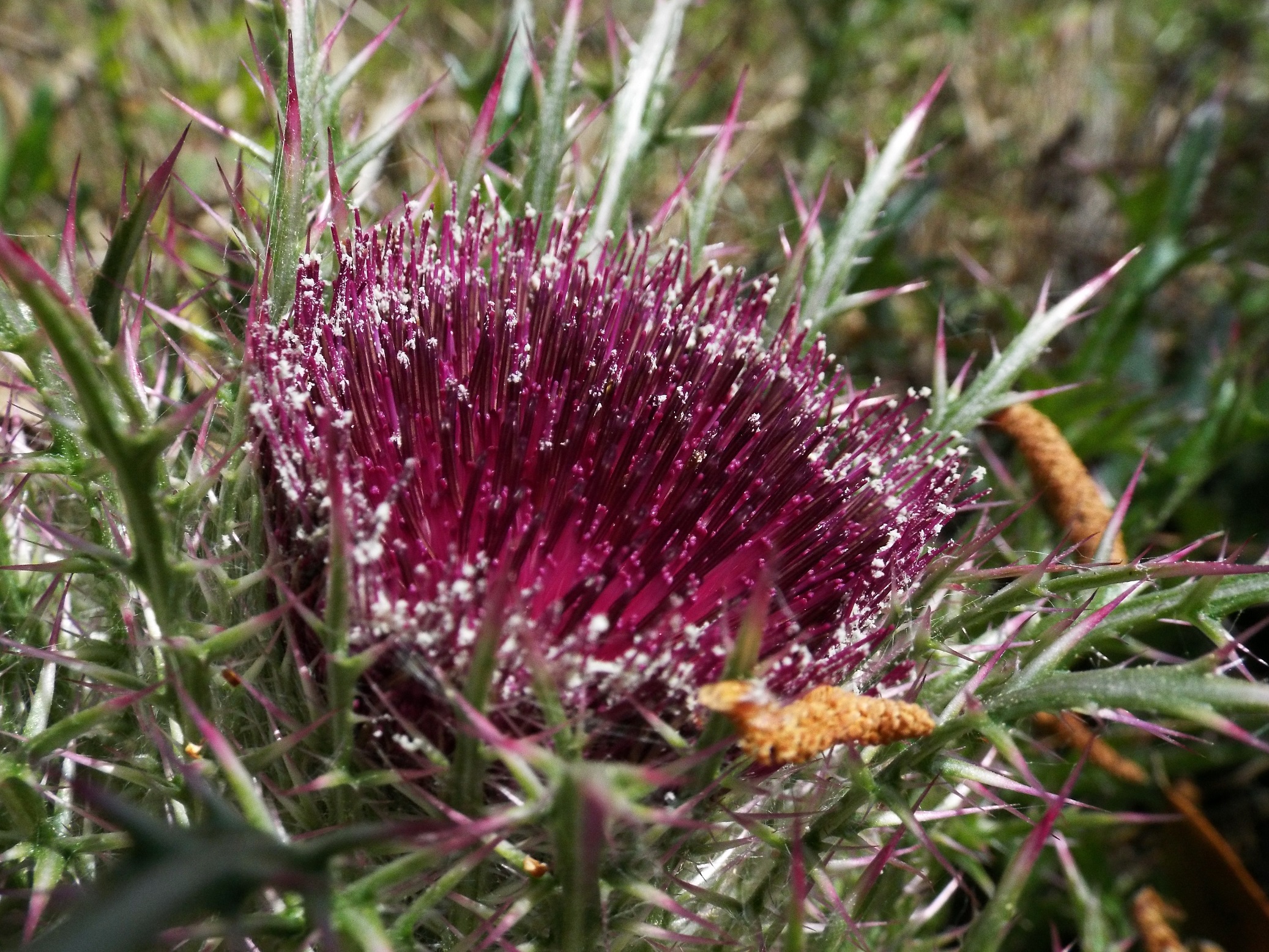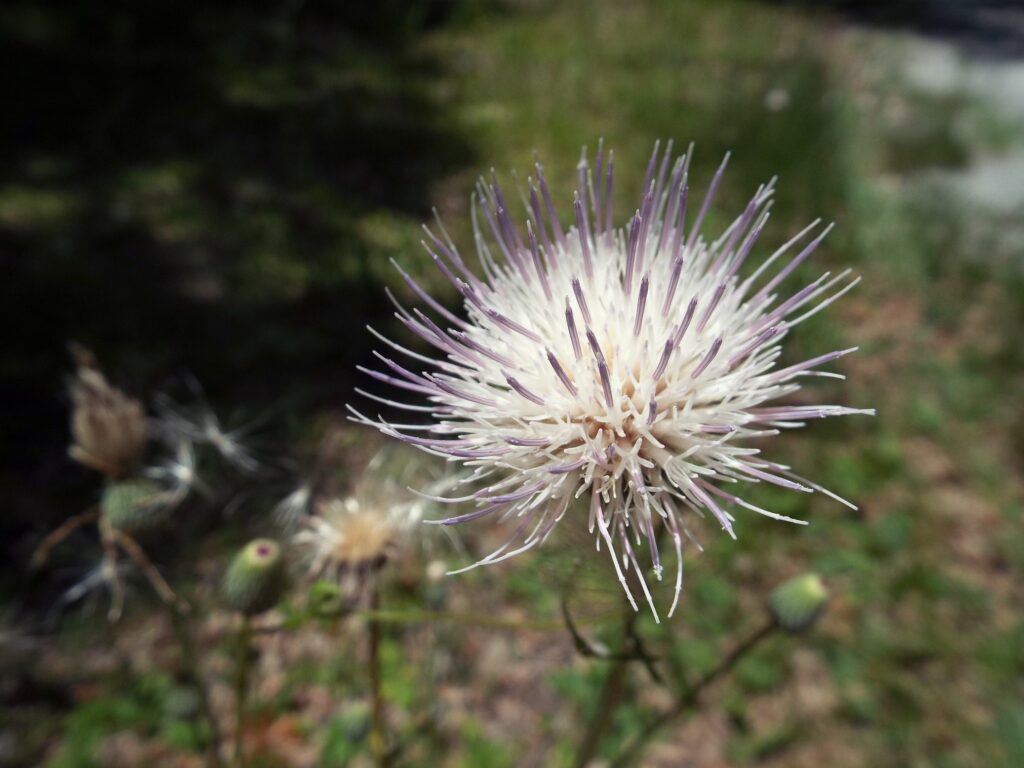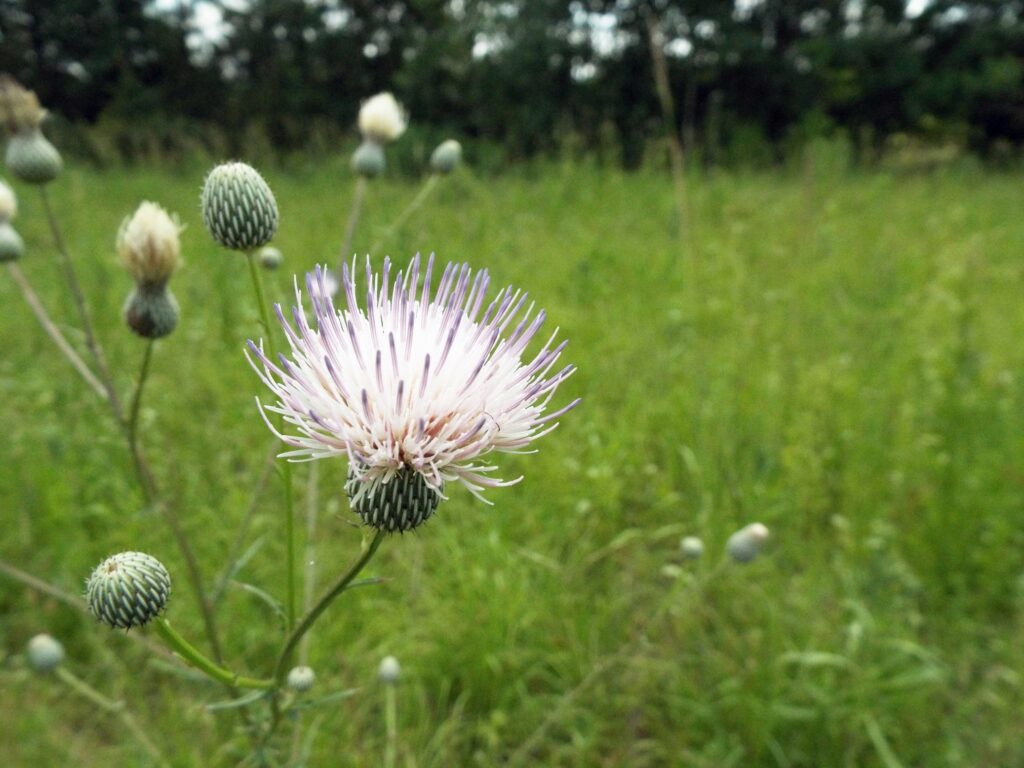



Once again for Flora and Fauna Friday, I’ll be writing in defense of a scorned and underappreciated genus of plant. This week I’m defending the honor of the genus Cirsium, the Thistles. We have two common Thistle species on Edisto: Yellow Thistle (Cirsium horridulum) and Nuttall’s Thistle (Cirsium nuttallii).
Thistles get a bad rap because they’re pokey and they make lawns and pastures look unkempt. But, a Thistle’s goal in life is not to assault the feet of barefoot meadow frolickers or the eyes of meticulous landscapers. Much like Sand Burs, they’re just trying to get by, undisturbed and uneaten, in a highly competitive habitat.
Thistles thrive in early successional habitat with a lot of disturbance. Succession and disturbance regimes are both doozies of ecological concepts that I’ll save for another time. For now, just know that the habitats they like don’t have many or any trees and some event regularly occurs that keeps the plant life in that condition. So these are places like roadsides, pastures, fields, lawns, savannas, and forest edges. Places where humans or nature keeps trees and shrubs out and the grass from becoming hay. Thistles do well here because they spend the majority of their life as something known as a basal rosette. A circle of leaves originating from a central point, laying directly on the surface of the ground above a ball of perennial roots. This keeps them low and out of harm’s way from things like snow, fire, and bushhogs. All while minimizing energy needs and shading out any grasses that might try to grow beneath its leaves, stealing its water and nutrients. Their stems and leaves, as I’m sure many of you are aware, are covered in hundreds of viciously sharp spines. These protect the plant from herbivores, like deer and rabbits.
When the time comes, thistles ascend from their basal rosette and form an inflorescence, or flower stalk. These flower stalks can be very large and are, predictably, covered in a profusion of little stabby bits. These flowers are unappealing to both lawn enthusiasts and would be herbivores but they are a huge draw for both Honeybees and native pollinators. Butterflies, bees, wasps, flies, and beetles swarm to these flowers for nectar and pollen. Especially the flowers of the large, early blooming Yellow Thistle. When the flowers have finished, Thistles produce scores of fluff tethered seeds that feed both Finches and Sparrows. These lint-linked seeds float on the breeze to new habitats with ease. If they, by chance, land in another open habitat, they can start the cycle anew. The parent plant is perennial and will come back each year until the habitat can no longer support it.
Yellow Thistles start producing flowers this time of year. Their flower stalks only reach about 3 feet in height but their stalks can be as big around as your forearm! Yellow Thistles get their name from their large, egg-sized, yellow-white flowers that are sheathed in a cage of spiny leaves. However, their flowers can also be pink or even magenta (like in the first photo below). This species is a great nectar and pollen source for pollinators emerging from their winter waiting.
Nuttall’s Thistles don’t bloom until the summer. Usually in two waves, one in July and one in September. Their flower stalks are pretty skinny but they can exceed 7 feet in height! The flowers of Nuttall’s Thistles are quite different from those of Yellow Thistle. They are much daintier, open, and showy. The flowers of this species range in color from white to hot pink. They appeal to a wide array of pollinators as well.
Thistles provide many benefits to our native pollinators, which in turn provide benefits to the local plant community as well as human agriculture. Next time you have a thistle spring up in your flower bed or front yard. Stay thy shovel and maybe you’ll reap the benefits of healthier wildlife habitat.